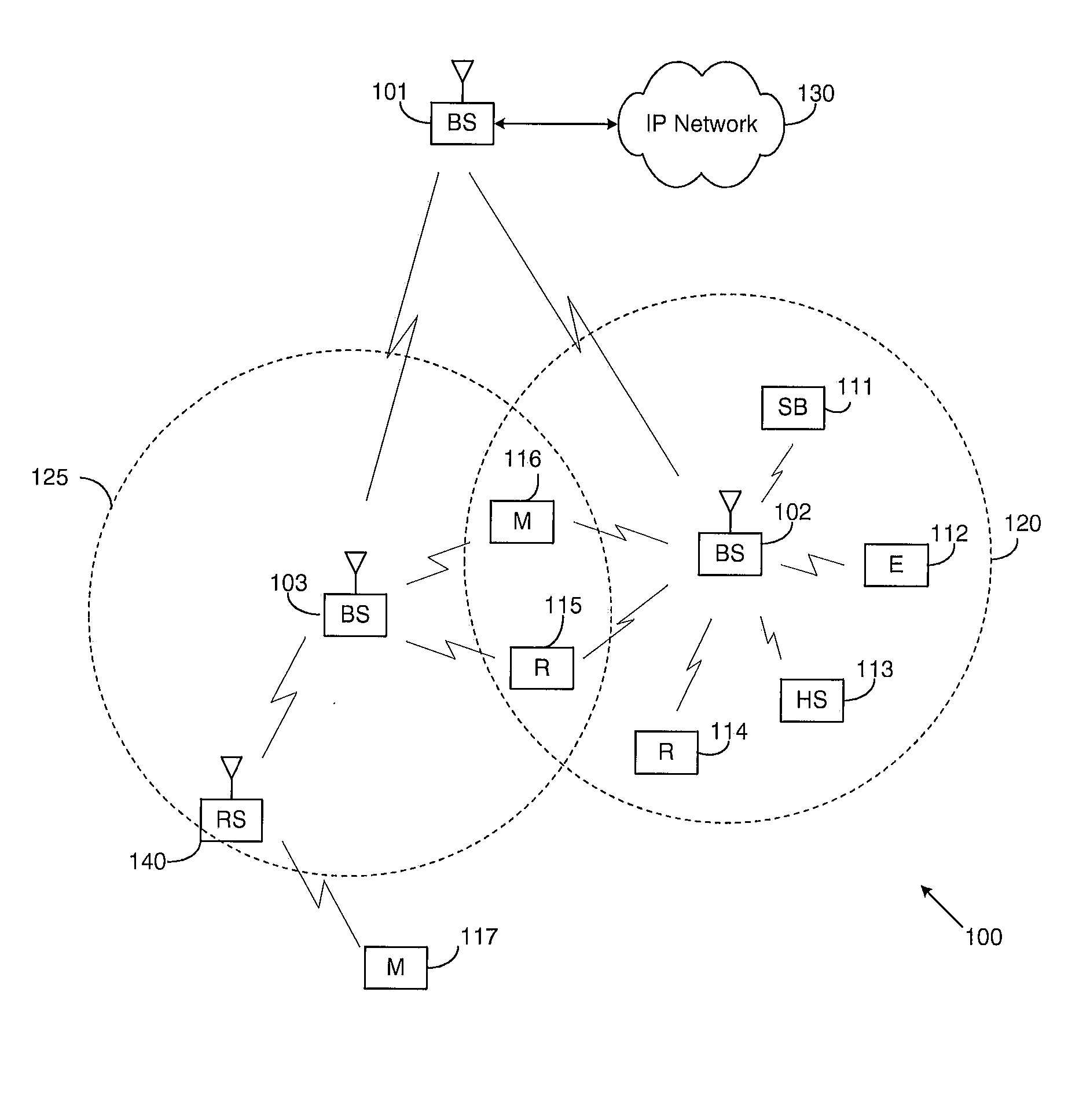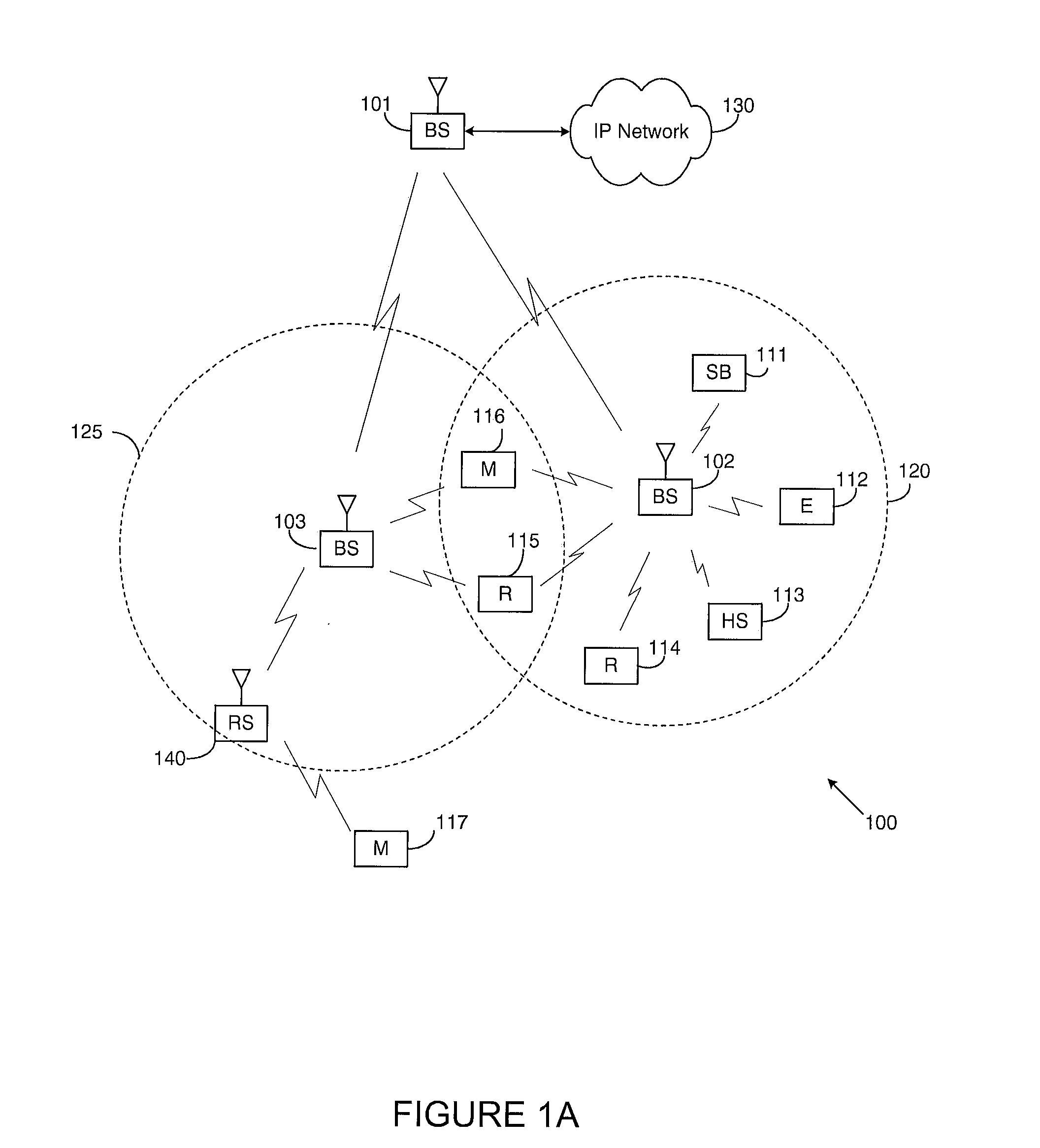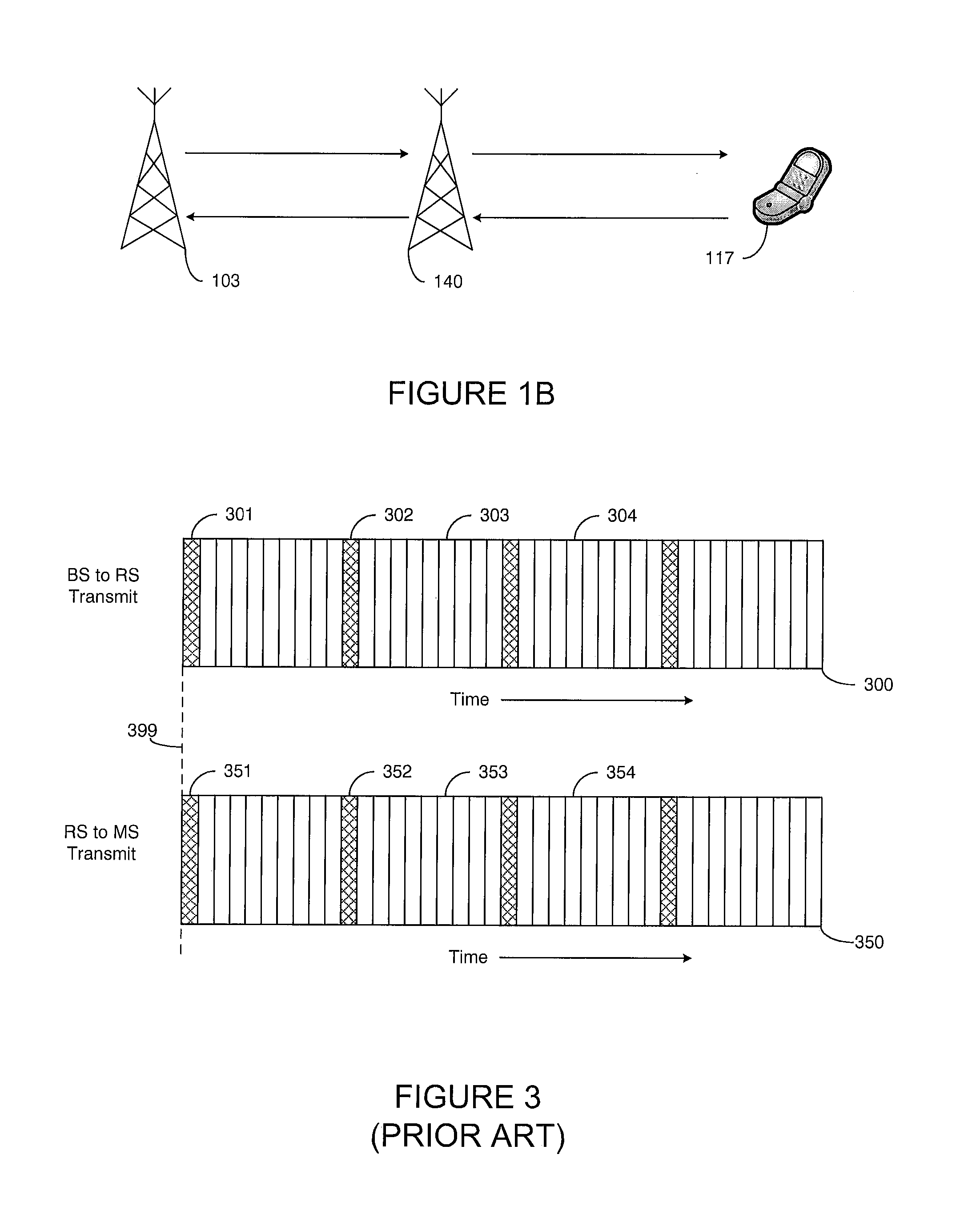Method and apparatus for relaying wireless traffic in a wireless network
a wireless network and wireless network technology, applied in the field of wireless network relay, can solve the problems of self-interference, major technical problem, and particularly harmful problem of control channel signal self-interferen
- Summary
- Abstract
- Description
- Claims
- Application Information
AI Technical Summary
Benefits of technology
Problems solved by technology
Method used
Image
Examples
Embodiment Construction
[0024]FIGS. 1 through 6, discussed herein, and the various embodiments used to describe the principles of the present disclosure in this patent document are by way of illustration only and should not be construed in any way to limit the scope of the disclosure. Those skilled in the art will understand that the principles of the present disclosure may be implemented in any suitably arranged wireless network.
[0025]FIG. 1 illustrates exemplary wireless network 100 that is suitable for operating a relay station according to one embodiment of the present disclosure. In the illustrated embodiment, wireless network 100 includes base station (BS) 101, base station (BS) 102, and base station (BS) 103. Base station 101 communicates with base station 102 and base station 103. Base station 101 also communicates with Internet protocol (IP) network 130, such as the Internet, a proprietary IP network, or other data network.
[0026]Depending on the network type, other well-known terms may be used ins...
PUM
 Login to View More
Login to View More Abstract
Description
Claims
Application Information
 Login to View More
Login to View More - R&D
- Intellectual Property
- Life Sciences
- Materials
- Tech Scout
- Unparalleled Data Quality
- Higher Quality Content
- 60% Fewer Hallucinations
Browse by: Latest US Patents, China's latest patents, Technical Efficacy Thesaurus, Application Domain, Technology Topic, Popular Technical Reports.
© 2025 PatSnap. All rights reserved.Legal|Privacy policy|Modern Slavery Act Transparency Statement|Sitemap|About US| Contact US: help@patsnap.com



